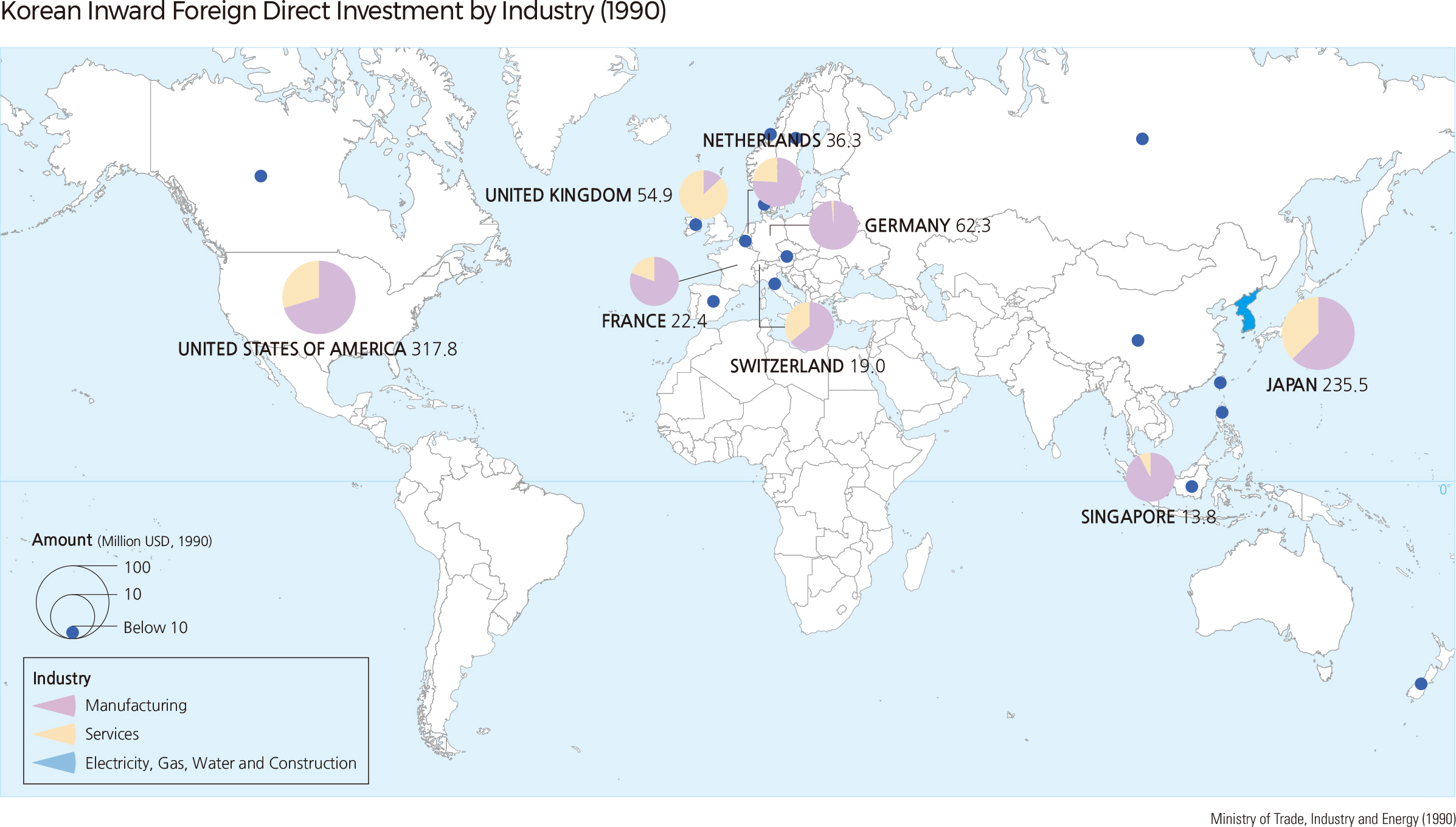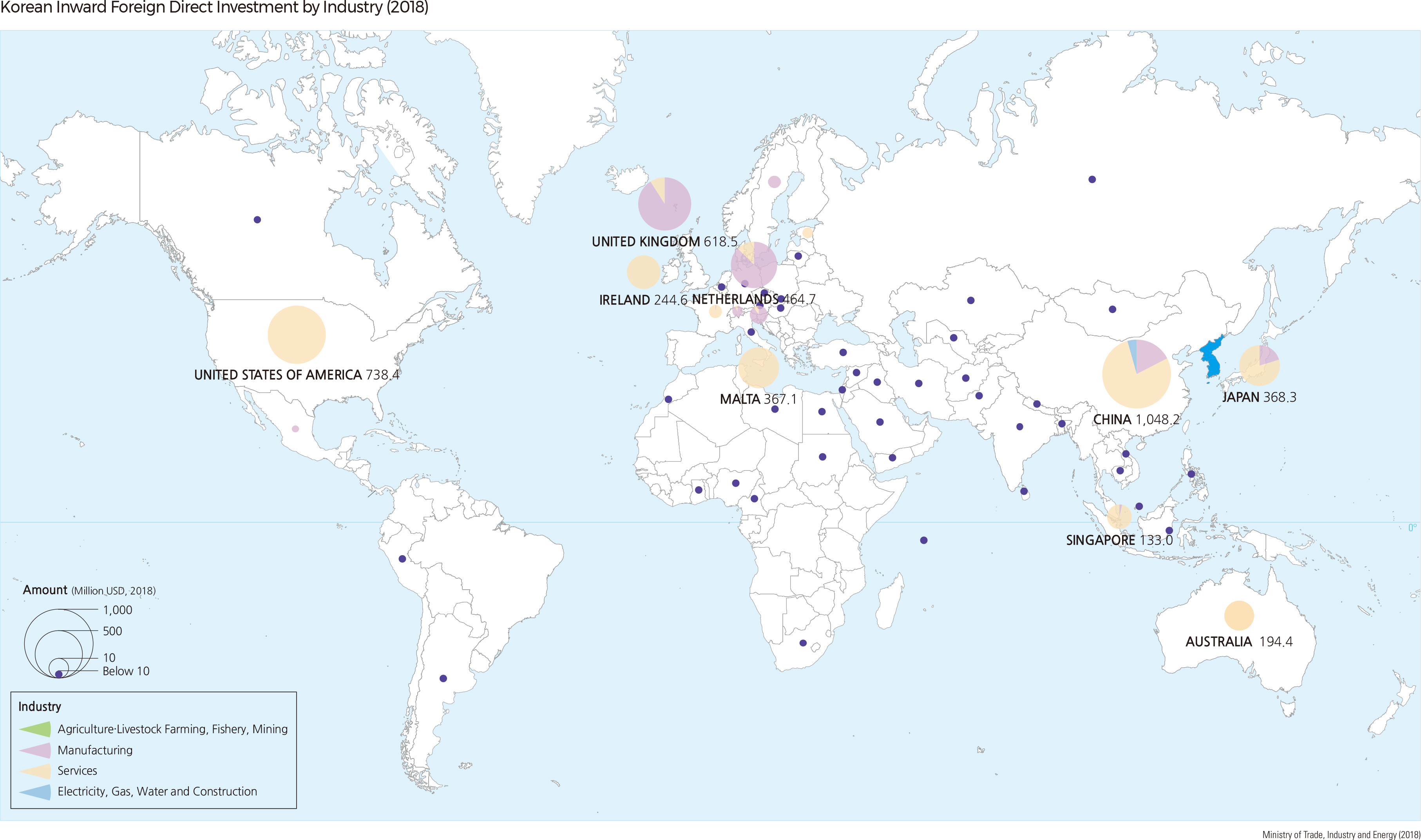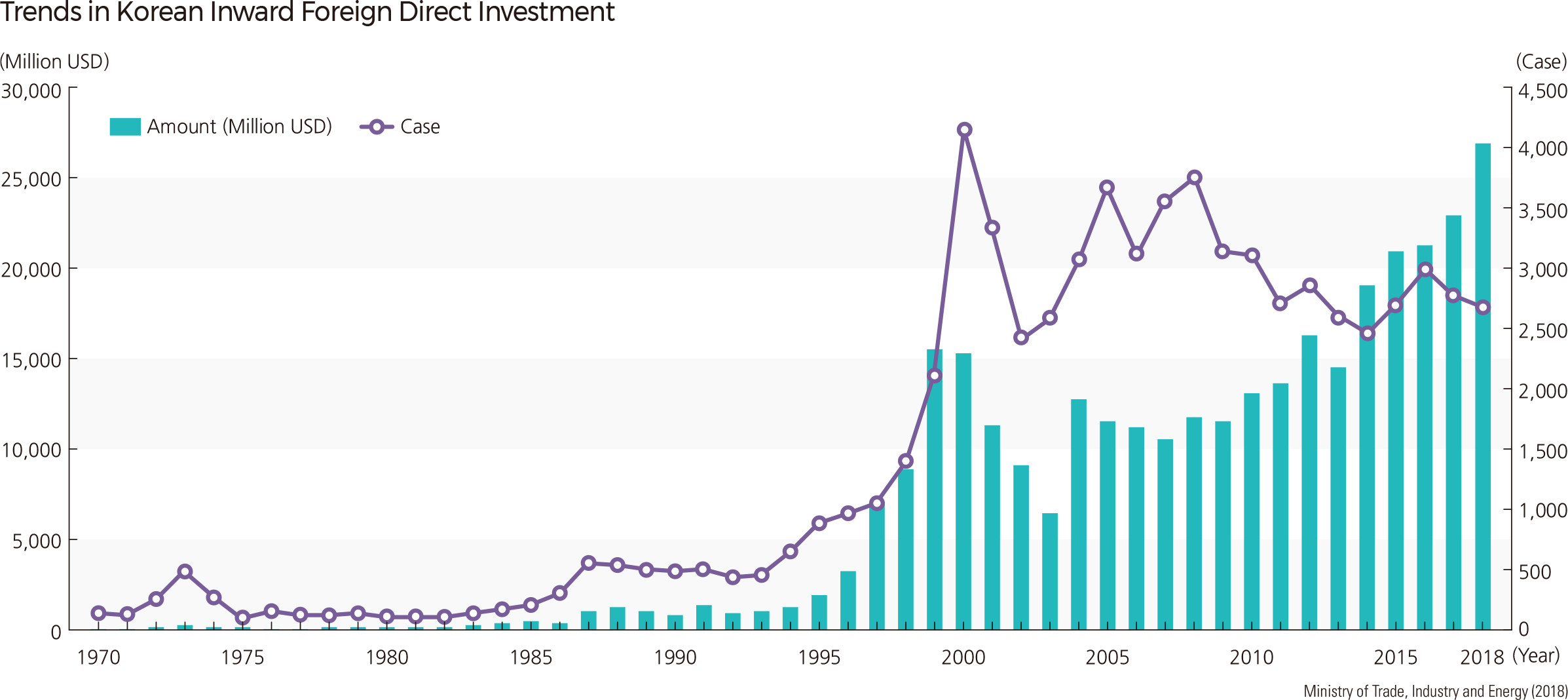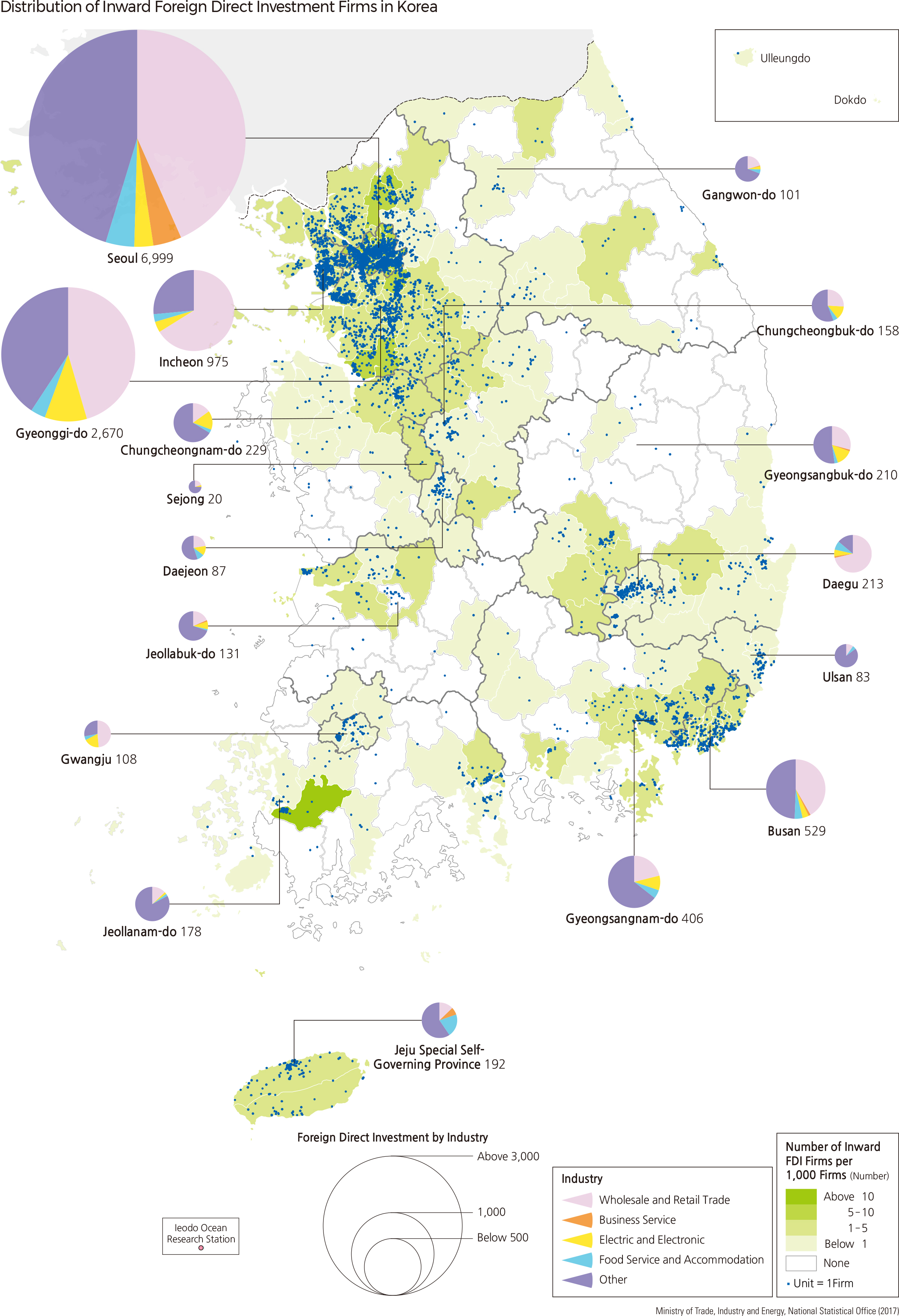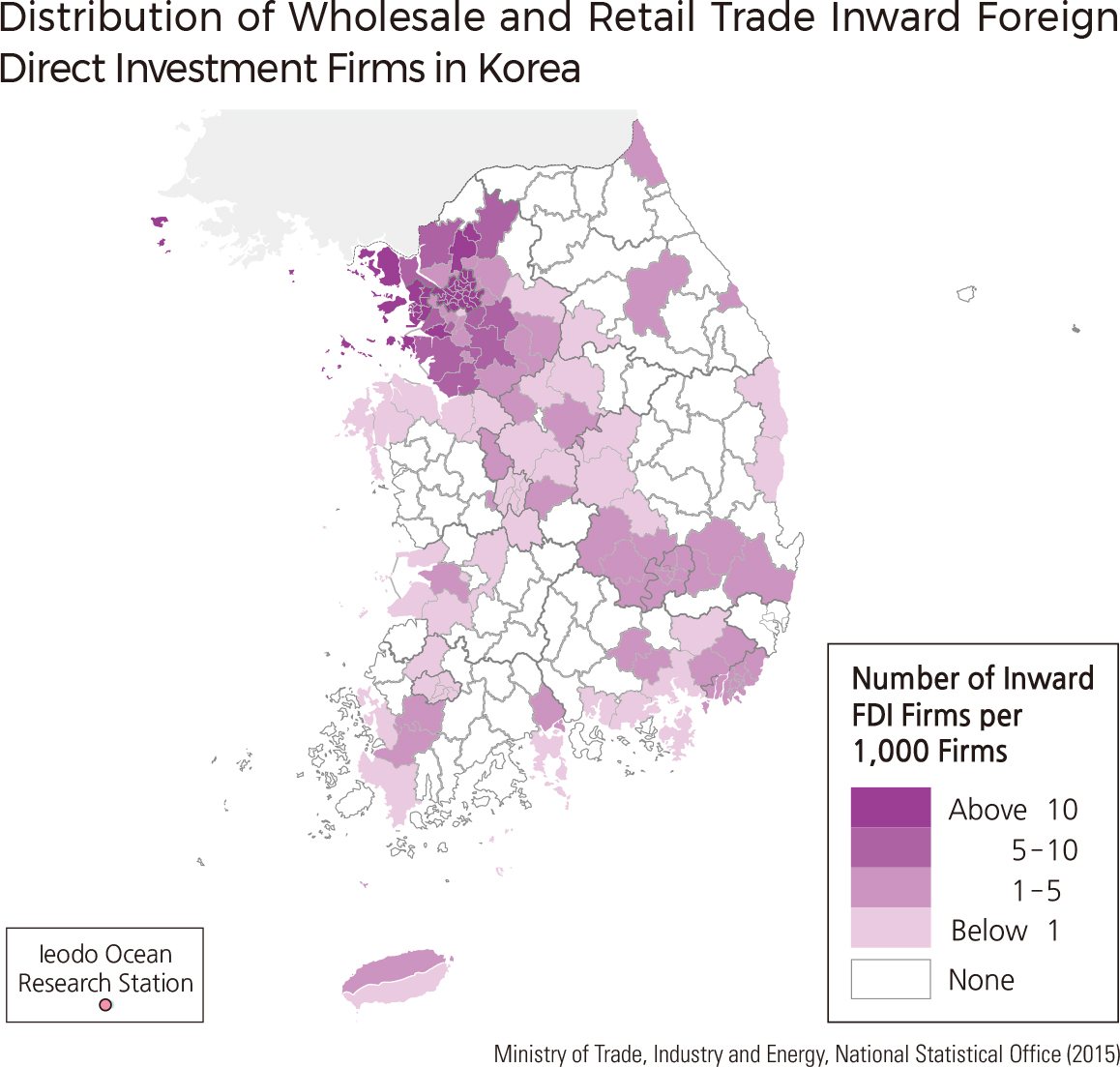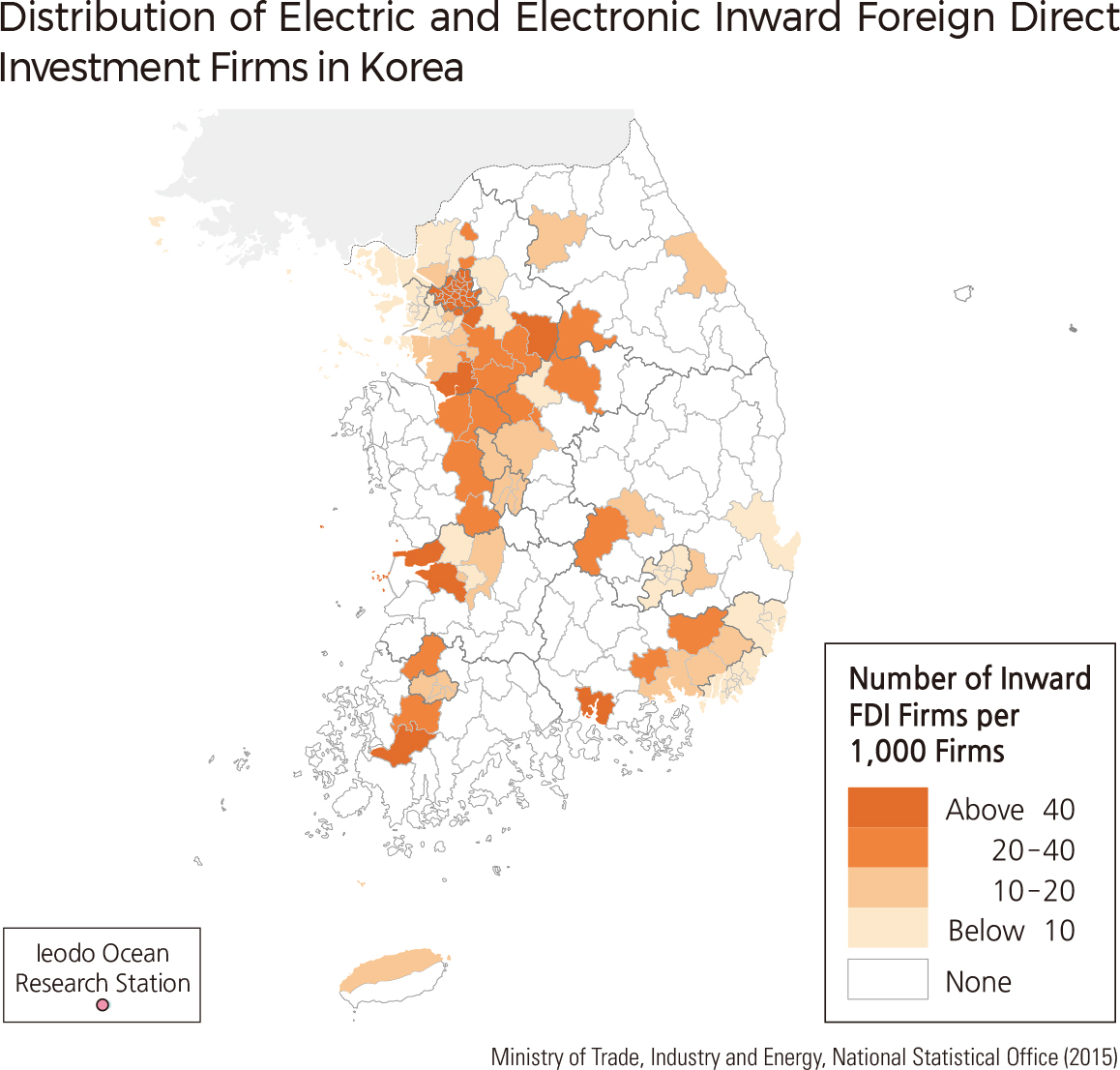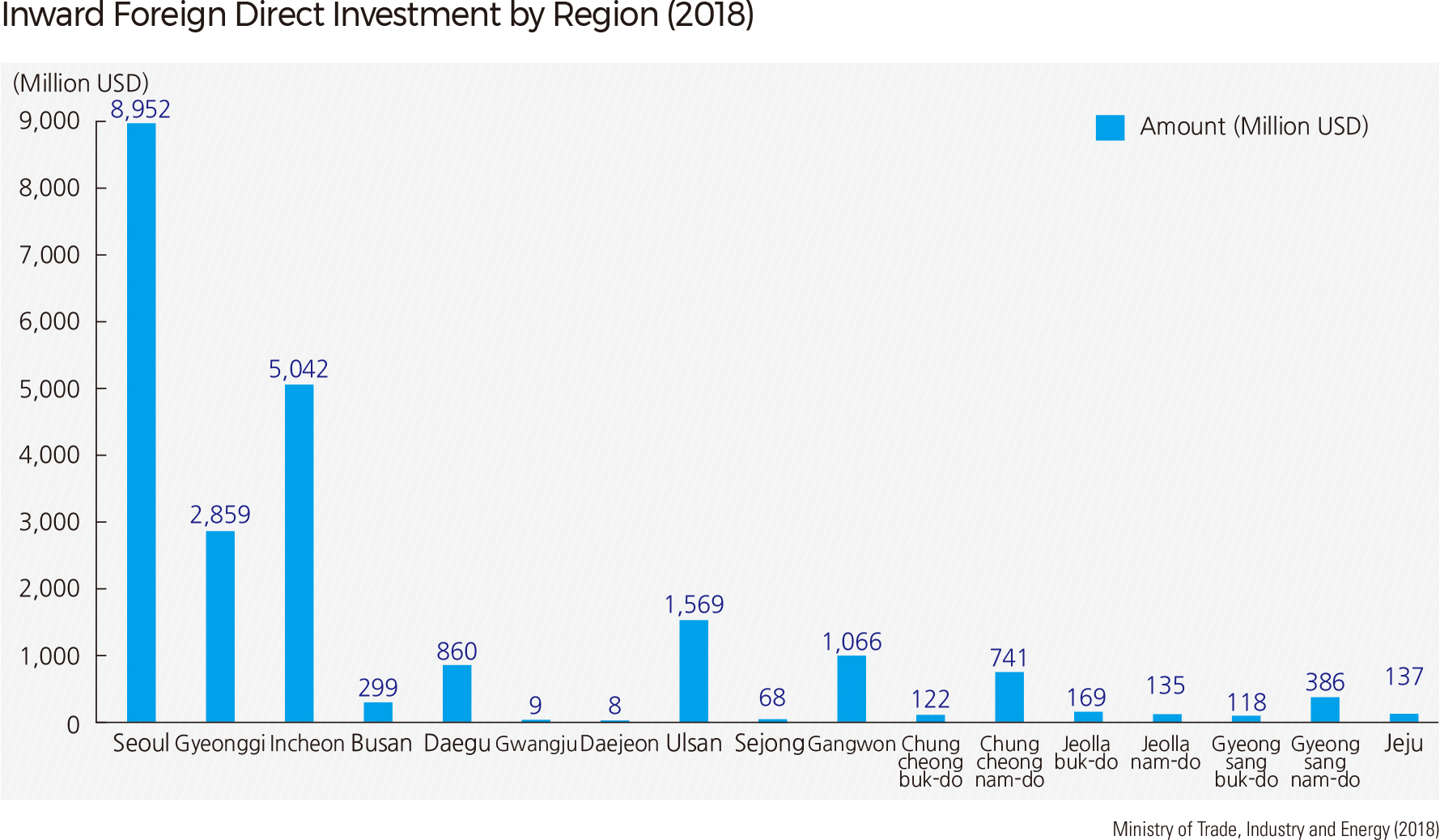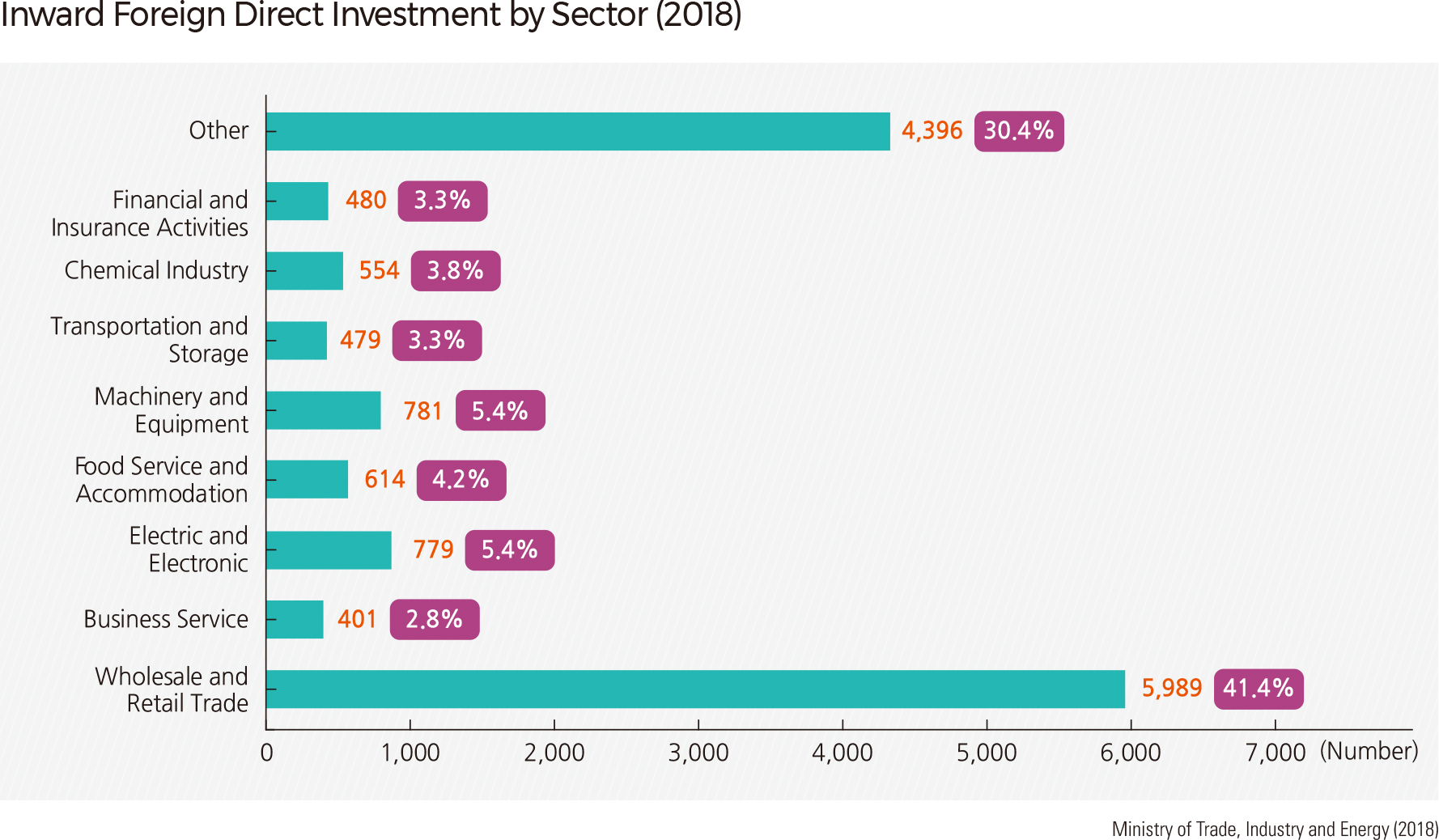English I 2019
The foundation of inward foreign direct investment (FDI) in Korea was established early in the 1980s. It has become effective after various governmental stimulation policies were introduced in the late 1990s. The Korean Congress passed the Foreign Investment Promotion Act in 1998 that improved upon the former Foreign Investment and Foreign Capital Inducement Act. According to the new act, the inward foreign direct investment system became more favorable to investors, and the Korean government was then able to provide multiple incentives to foreign investors. Furthermore, the revision of the Foreign Investment Promotion Act in 2010 allowed local governments in Korea to invite foreign direct investments. As a result, the inward FDI increased dramatically from USD 0.8 billion (based on investment reports) in 1990 to USD 26.9 billion in 2018. The number of countries investing in Korea increased from 26 countries in 1990 to 69 countries in 2018. According to the Ministry of Trade, Industry, and Energy, the ranking of Korea on the “doing business” index developed by the World Bank rose from 23rd in 2008 to 5th in 2018, and the ranking of the trust index of FDI developed by AT Kearney was also improved from 24th in 2007 to 17th in 2018.
Geographically, Korea’s inward FDI was dominated by the United States and Japan in 1990, but it was diversified due to the recent growth of investments from the United States, China, and European countries. For example, the proportion of investments from the US and Japan decreased significantly from 39.8% and 29.5%, respectively, in 1990 to 15.4% and 7.8% in 2018. Concurrently, the inward FDI from China, the United Kingdom, and the Netherlands increased to 21.9%, 12.9%, and 9.7%, respectively. The focus of the inward FDI has also shifted from manufacturing to the service industry. In the 1990s, the inward FDI focus on the service industry was not popular except in countries such as the United Kingdom, Canada, and Denmark; however, the 2018 statistics now show that the majority of the inward FDI was in the service industry.
In 2018, the amount of inward FDI in Korea accounted for USD 26.9 billion. Most of the inward FDI was concentrated on the metropolitan areas, accounting for 62.6% (USD 16.85 billion) of the total inward FDI. For example, Seoul, Incheon, and Gyeonggi Province received 33.3% (USD 8.95 billion), 18.7% (USD 5.04 billion), and 10.6% (USD 2.86 billion), respectively. Apart from the metropolitan areas, Ulsan (5.8%, USD 1.57 billion) attracted the most foreign investors.
According to the status of foreign investment firms issued by MTIE (July 2019), there are 14,473 foreign firms in Korea. The main investment sectors are wholesale and retail trade, followed by R&D and science and technology services, accounting for 41.4% (5,989 firms) and 7.1% (1,032 firms), respectively. Information and communication, machinery and equipment, electric and electronic, and food service and accommodation sectors received 6.7%, 5.4%, 5.4%, and 4.2%, respectively, of total inward FDI in Korea as of July 2019. |
